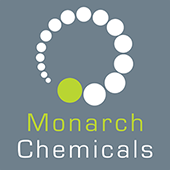Our glossary of common chemical terms offers a quick snapshot to help you understand some of the most frequently used terms in the field.
Glossary of Common Chemical Terms

12 Jan 2023
Often, understanding the terms and concepts used in the chemical industry offers great insight into how chemicals and compounds are used and the role they play within everyday formulations and products.
Acid
An acid is a substance with a pH of less than 7. Acids are denoted on a litmus test by turning it red and are typically sour or tart tasting (food grades) or corrosive.
Alkali
An alkali is a substance with a pH greater than 7. Alkalis can neutralise an acid and are denoted on a litmus test by turning it blue. Although they can 'cancel out' an acid, certain alkalis are strong bases which can also be highly corrosive.
Anhydrous
Anhydrous, taken from the Greek ‘an’ which means without and ‘hydor’ which means water. Anhydrous means a substance which contains little or no water.
Aqueous
Aqueous describes a solution or mixture which involves water. When a chemical has been dissolved in water it is referred to as ‘aqueous solution’ or ‘aq’ for short. Examples include Hydrochloric Acid which is the aqueous solution of hydrogen chloride.
Base
A base is a substance with a pH greater than 7 and the ability to neutralise an acid. Although similar, not all bases are alkali (but all alkalis are bases). The difference – many bases do not dissolve in water, but if a base does dissolve in water, we call it an alkali.
Buffering Agent
A buffering agent is a substance that can resist changes in pH when small amounts of an acid or base are added to a solution. For example, buffers are heavily used within the personal care and cosmetics industry where they help maintain the neutral pH of a product by preventing them from becoming too acid or alkaline.
Catalyst
A catalyst is a substance that alters the rate of a chemical reaction without being consumed or altering the compounds in the reaction. It creates an alternative path the reactants to follow which either slow down or speed up the process.
Chelating Agent
A chelating agent is a compound that forms a ring-like structure around a metal ion. We call this a chelate. The role of a chelate is to inactivate the metal ion to prevent unwanted chemical reactions.
Coagulant
A coagulant causes small suspended particles (colloidal) in a liquid mixture to clump together (coagulate) and form a semi-solid mass.
Colloid
A colloid is a mixture in which small particles of a substance are evenly dispersed throughout another substance.
Dispersing Agent
A dispersing agent, also known as a dispersant or surfactant is added to a liquid to keep the solid particles suspended within it. The function of the dispersant is to reduce the attraction between solid particles, preventing them from clumping together.
Effervescence
Effervescence is the process of releasing bubbles of gas from a liquid by a chemical reaction.
Emulsion
An emulsion is a mixture of two or more liquids which usually do not mix (for example oil and water)
Ether
An ether is a compound made up of an oxygen atom connected to two carbon-based groups, often called alkyl or aryl.
Flocculant
A flocculant, or flocculation, is a process where a coagulant is added to a water mixture to help particles bond together and create larger solid masses which are easier to separate. This clumped together matter is called floc. Flocculants are often used in water treatment to separate solid particles from liquids and to purify the liquid.
Hydrate
Hydrate is a compound which includes water as part of its crystalline structure.
Hydrous
Same as hydrate, hydrous compounds contain water molecules.
Monohydrate
Monohydate means a chemical compound with water, but as the name ‘mono’ suggests which is of Greek origin meaning ‘one’, ‘single’ or ‘alone’ it possesses one water molecule per one molecule of compound.
Oxidising Agent
An oxidising agent oxidises is a molecule or ion that can accept electrons from another substance thereby oxidising it. They are used to initiate or drive chemical reactions and as reagents.
Pentahydrate
Ancient Greek for the word five this means a chemical compound with five water molecules per molecule of compound.
Polymer
Polymers are characterised by being flexible, water-proof and resistant to chemicals. They are long chains made up of repeating compounds called monomers. The properties of a polymer depend on the type of monomers and how they are linked together – stiff or flexible, transparent or opaque, strong or weak and so on.
Reactivity
Reactivity is the rate in which a substance goes through a chemical change when mixed with another substance.
Reagent
A reagent is a substance used to carry out laboratory tests. When added to a solution reagents trigger a chemical reaction to help detect either the presence or absence of certain substances.
Reducing Agent
A reducing agent reduces another atom or ion by causing it to gain electrons.
Sequestrant
A sequestrant is a compound used to bind and remove metal ions from a solution to keep them from reacting or forming solid particles. This allows the metal ions to be easily recovered and prevents the formation of unwanted impurities in a solution.
Solvent
A solvent is used to dissolve, dilute or disperse other compounds such as solids, gases or other liquids. Common examples of solvents are water, alcohol and acetone.
Titration
Titration is a laboratory method of quantitative chemical analysis. It involves slowly adding a known concentration of a second substance (this is called a titrant) to the first substance until a specific reaction occurs, such as change in colour. Through this measurement, the concentration of the first substance can be calculated.



